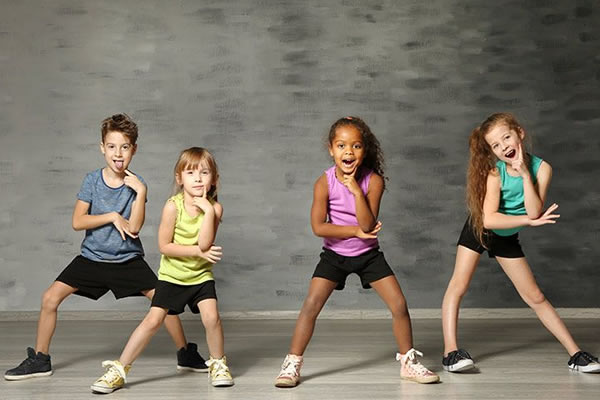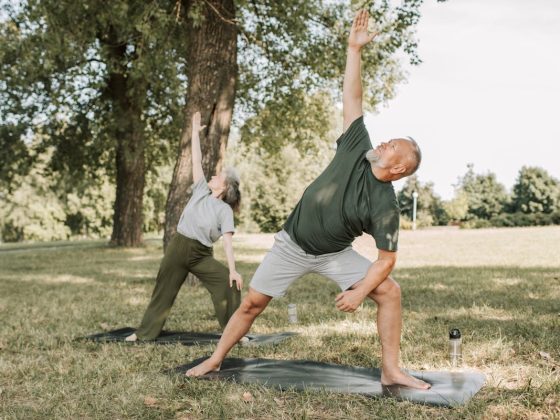In today’s world of electronic entertainment it can be hard to sell the idea of cardio and fitness for kids to its target audience. It doesn’t help that there are more reports than ever about potential dangers lurking outside the safety of one’s home either. But there are ways to make exercise fun, engaging and doable for kids even today.
Kids And Exercise
When devising a plan of regular exercise for your kids, bear in mind it’s a different ballgame than adults. On one hand, most kids don’t have the kind of health complications that adults do (joint problems, blood pressure issues, previous injuries etc) but they also have a lower boredom threshold. While an adult may be able to stick to plodding away on a treadmill staring into a wall day in and day out, kids require a little more fun and variety.
Fun Cardio And Fitness For Kids
Some forms of exercise come naturally for kids. Playing tag, climbing on playground equipment and so forth is as good and healthy today as it was 50 years ago. Here are a few additional ways to get the little ones moving.
Wii Fit And Dance Pads
Dance Dance Revolution took the arcades by storm in the late 1990s, moving the gaming experience from mashing buttons to actual physical activity. It’s no wonder that it has since moved onto the home console market.
For those who have not tried this type of dancing game, the way it works is you place a pad with arrows on the floor and try to move your feet to match the arrows in sync with the music and visual cues on screen. As you get more advanced, you move to increasingly difficult dance patterns with several moves per second that will make even the already fit break a sweat.
Most game console systems offer this kind of fare, but Nintendo recently introduced an even more purebred exercise game called Wii Fit. This game comes with a balance board that makes the foundation for a wide variety of fun and challenging minigames targeting cardio, strength training, yoga and balance. Wii Fit tracks your progress automatically and can provide instant feedback, with goal tracking and other features that lend themselves well to rewards and incentives.
Trampolines
Jumping is fun, and when you have a 12-15 foot trampoline to propel you several feet into the air, it’s even more fun. Imagination is the limit — in addition to improvising an aerial acrobatics routine, you can add a basketball hoop and do awesome trick shots, for example. Make sure you have a properly assembled safety net around it, though, as many kids get hurt when they lose control and go flying down on the hard ground below.
Aquatic Adventure Parks
If you live in a medium or large city, odds are you have one of the new breed of aquatic parks around. Instead of the dull parks of yore, most new ones have a heavy emphasis on action with slides, wave machines and water-based games that are sure to keep your kids constantly in motion.
Climbing Walls
Static climbing walls are a lot of fun and provide a good back and arm workout. Many larger playgrounds have them (with soft padding underneath in case of falls, obviously) but many play centers and, yes, fitness centers have revolving rock climbing walls that kick it up a notch. Instead of a wall with only so many hold-points before you have to turn back down, this works like a vertical escalator slowly rolling against you to keep the climb going for as long as you like. This eliminates the need for overly high climbing walls with safety harnesses and the like, since you’re only a couple feet above the floor pad at all times.
Parents
Finally, let’s not forget the single best tool in the arsenal for any form of cardio and fitness for kids: parents. Your kids look up to you and love to participate in your exercise. If you’re a jogger, bring your kid along for a shorter run a couple times a week, adjusting your speed to his or hers. If you’re a tennis player, bring your kid to the court and introduce him or her to the basics of the game once a week. Whatever your passion, set aside some time each week to make it a family occasion — separate from your own, tougher workouts of course.
Likewise, most kids respond well to incentives and encouragement. Set small, achievable goals and don’t hold back on the praise. Challenge your kid to hitting X number of free-throw baskets for a dollar, or a new video game cartridge when he or she breaks a certain time for a one-mile run. Be creative — the important thing is to have fun while laying the foundation of a lifetime of good health. Good luck!





